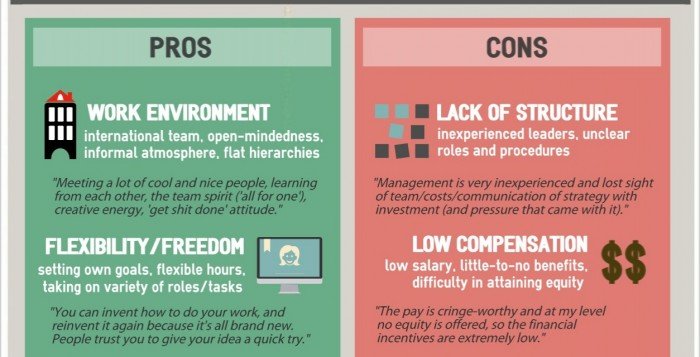In recent years, there has been an upsurge of interest in the role of mobile money. Initially, mobile money was developed as a means to reduce the transaction cost of remittances. However, mobile money has impacted the remittance industry beyond the goal of making fund transfers cheaper. In fact, it has emerged as a key tool which can support financial inclusion initiatives.
By digitizing the flow of money in the informal financial system, mobile money has given both senders and recipients the opportunity to become part of the formal financial ecosystem. With membership to the formal financial system, the financial excluded can now access a broader range of financial services and products which can meet their specific needs. This in turn will allow them to capture any economic opportunity which arises. It also allows the financial excluded to better weather any financial shocks that could drive them further into poverty.
Digitizing Informal Transaction Flows
In 2013, Orange Money launched their international mobile money remittance service for Côte d’Ivoire, Mali and Senegal. The service proved to be extremely popular with the transaction values and volumes increasing rapidly every month. Within a span of eighteen months, the cross border remittance amounts reached a quarter of all remittances reported by the World Bank for the above mentioned three countries. Among the three countries, Mali reported the highest rate of adoption by senders using Orange Money. It is believed that the reason for this higher adoption rate in Mali is due to the relatively more expensive and unreliable informal remittance channel which senders had to rely upon previously. In other words, the lower cost of sending money through Orange Money is what gives the mobile money service provider its competitive edge.
Orange Money as a way to increase transparency for the payment of the road tax stickers in Guinea.Another example of the success of mobile money in digitalizing informal money transfers is between Côte d’Ivoire and Burkina Faso. A sender in Côte d’Ivoire wishing to send money to their families in Burkina Faso will remit the funds through MTN Mobile Money to Airtel Money in Burkina Faso.
While the mobile money service providers had expected their service to be popular among urban residents, it was noted that 60% of the recipients were residing in rural Burkina Faso. In rural areas where formal money transfer channels have a limited presence, people have to rely on informal channels to receive and send funds. With the introduction of mobile money transfer service, this changes the whole financial ecosystem in these regions, from an informal one to a digitalized one.
Competitive Remittance Services for Migrant Workers
With migrant workers making up to 88% of the population in Qatar, mobile service provider Ooredoo saw an opportunity in launching a mobile money remittance service for the low income segment of the migrant population. The service rolled out enabled Ooredoo’s customers to initiate international fund transfers directly from their mobile phone. By partnering with MoneyGram, the service gave the recipients a choice of receiving the funds directly to their digital wallet or in the form of cash from a MoneyGram agent.
The service was a commercial success with the annual growth rate at more than 100% between 2011 and 2015. What made Ooredoo’s mobile money remittance service so attractive to migrant workers was the convenience and competitive rates which the service offered them. In addition, they are also able to access other financial services with the Ooredoo mobile money account. For example, a new payroll service recently launched by Ooredoo allowed workers to receive their wages electronically directly into their mobile money account.
OoredooHowever despite the convenience and competitive rates which a mobile money remittance service can offer to customers, it should be noted that out of the 93 countries where the mobile money service is available, only customers in 16 countries can initiate international remittances directly from their phones. This limitation is largely due to regulatory restrictions. In order to facilitate wider adoption of mobile money and to expand financial inclusion among the unbanked, there need to be regulatory reforms that will encourage competition and the adoption of mobile money.
Ultimately, this will help hasten the achievement of the targets set by the UN’s Sustainable Development Goals (SDN 10c) proposal. Remittances often represent a key source of income for many families in the developing economies. By lowering the cost of remittances through mobile money, this will help to increase the amount of money that ended in the hands of the migrant’s family hence increasing their disposable income.
Article powered by Humaniq
Launched in 2016, Humaniq aims to provide mobile finance to the 2 billion unbanked population through its mobile app for good, that uses biometric authentication to replace traditional methods of ID and security. Humaniq’s open source stack and API will be available for startups and other businesses to build services on its core technology, making it easy to adapt their service and plug it into Humaniq’s network to reach a huge, untapped audience.

Dinis Guarda is an author, academic, influencer, serial entrepreneur, and leader in 4IR, AI, Fintech, digital transformation, and Blockchain. Dinis has created various companies such as Ztudium tech platform; founder of global digital platform directory openbusinesscouncil.org; digital transformation platform to empower, guide and index cities citiesabc.com and fashion technology platform fashionabc.org. He is also the publisher of intelligenthq.com, hedgethink.com and tradersdna.com. He has been working with the likes of UN / UNITAR, UNESCO, European Space Agency, Davos WEF, Philips, Saxo Bank, Mastercard, Barclays, and governments all over the world.
With over two decades of experience in international business, C-level positions, and digital transformation, Dinis has worked with new tech, cryptocurrencies, driven ICOs, regulation, compliance, and legal international processes, and has created a bank, and been involved in the inception of some of the top 100 digital currencies.
He creates and helps build ventures focused on global growth, 360 digital strategies, sustainable innovation, Blockchain, Fintech, AI and new emerging business models such as ICOs / tokenomics.
Dinis is the founder/CEO of ztudium that manages blocksdna / lifesdna. These products and platforms offer multiple AI P2P, fintech, blockchain, search engine and PaaS solutions in consumer wellness healthcare and life style with a global team of experts and universities.
He is the founder of coinsdna a new swiss regulated, Swiss based, institutional grade token and cryptocurrencies blockchain exchange. He is founder of DragonBloc a blockchain, AI, Fintech fund and co-founder of Freedomee project.
Dinis is the author of various books. He has published different books such “4IR AI Blockchain Fintech IoT Reinventing a Nation”, “How Businesses and Governments can Prosper with Fintech, Blockchain and AI?”, also the bigger case study and book (400 pages) “Blockchain, AI and Crypto Economics – The Next Tsunami?” last the “Tokenomics and ICOs – How to be good at the new digital world of finance / Crypto” was launched in 2018.
Some of the companies Dinis created or has been involved have reached over 1 USD billions in valuation. Dinis has advised and was responsible for some top financial organisations, 100 cryptocurrencies worldwide and Fortune 500 companies.
Dinis is involved as a strategist, board member and advisor with the payments, lifestyle, blockchain reward community app Glance technologies, for whom he built the blockchain messaging / payment / loyalty software Blockimpact, the seminal Hyperloop Transportations project, Kora, and blockchain cybersecurity Privus.
He is listed in various global fintech, blockchain, AI, social media industry top lists as an influencer in position top 10/20 within 100 rankings: such as Top People In Blockchain | Cointelegraph https://top.cointelegraph.com/ and https://cryptoweekly.co/100/ .
Between 2014 and 2015 he was involved in creating a fabbanking.com a digital bank between Asia and Africa as Chief Commercial Officer and Marketing Officer responsible for all legal, tech and business development. Between 2009 and 2010 he was the founder of one of the world first fintech, social trading platforms tradingfloor.com for Saxo Bank.
He is a shareholder of the fintech social money transfer app Moneymailme and math edutech gamification children’s app Gozoa.
He has been a lecturer at Copenhagen Business School, Groupe INSEEC/Monaco University and other leading world universities.

























